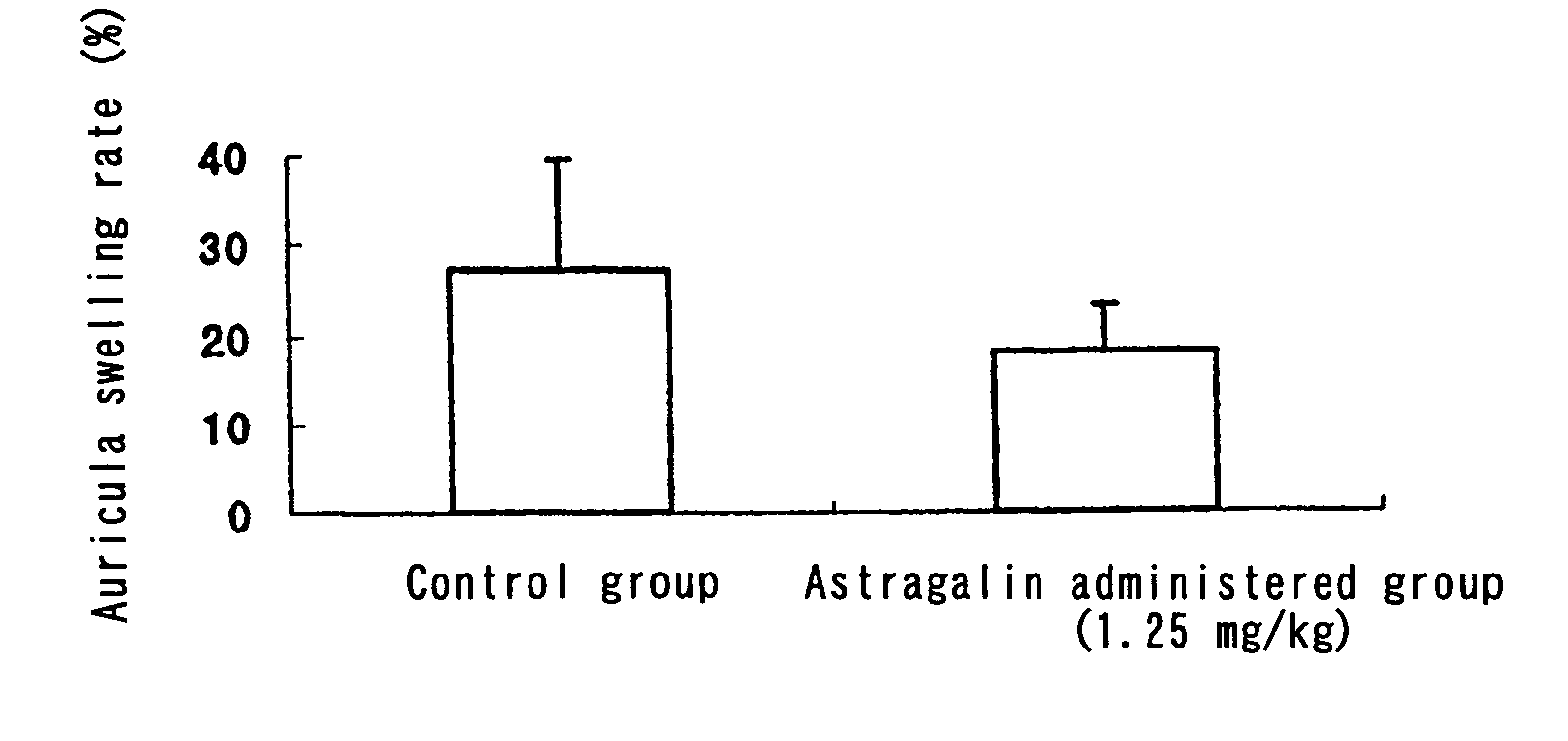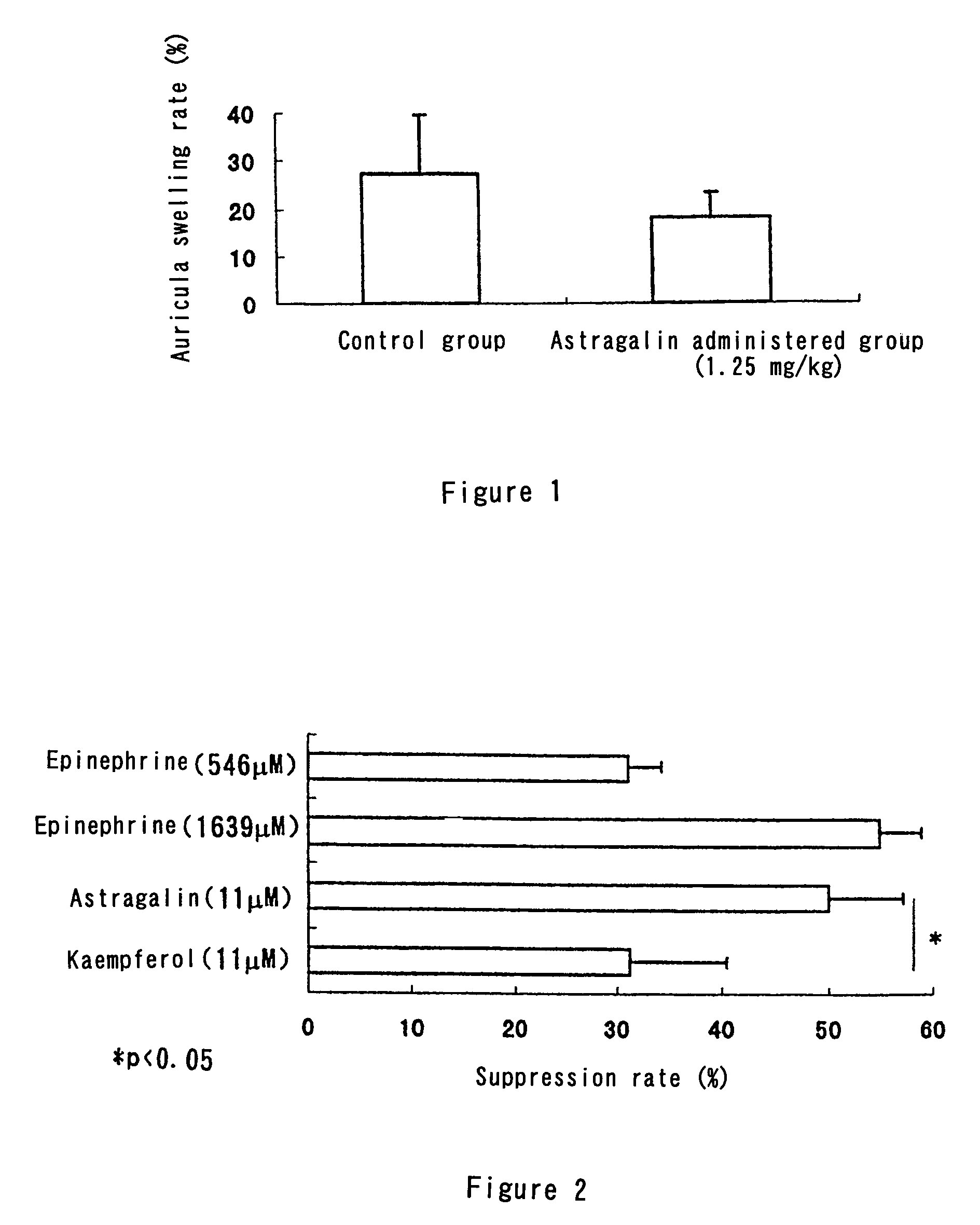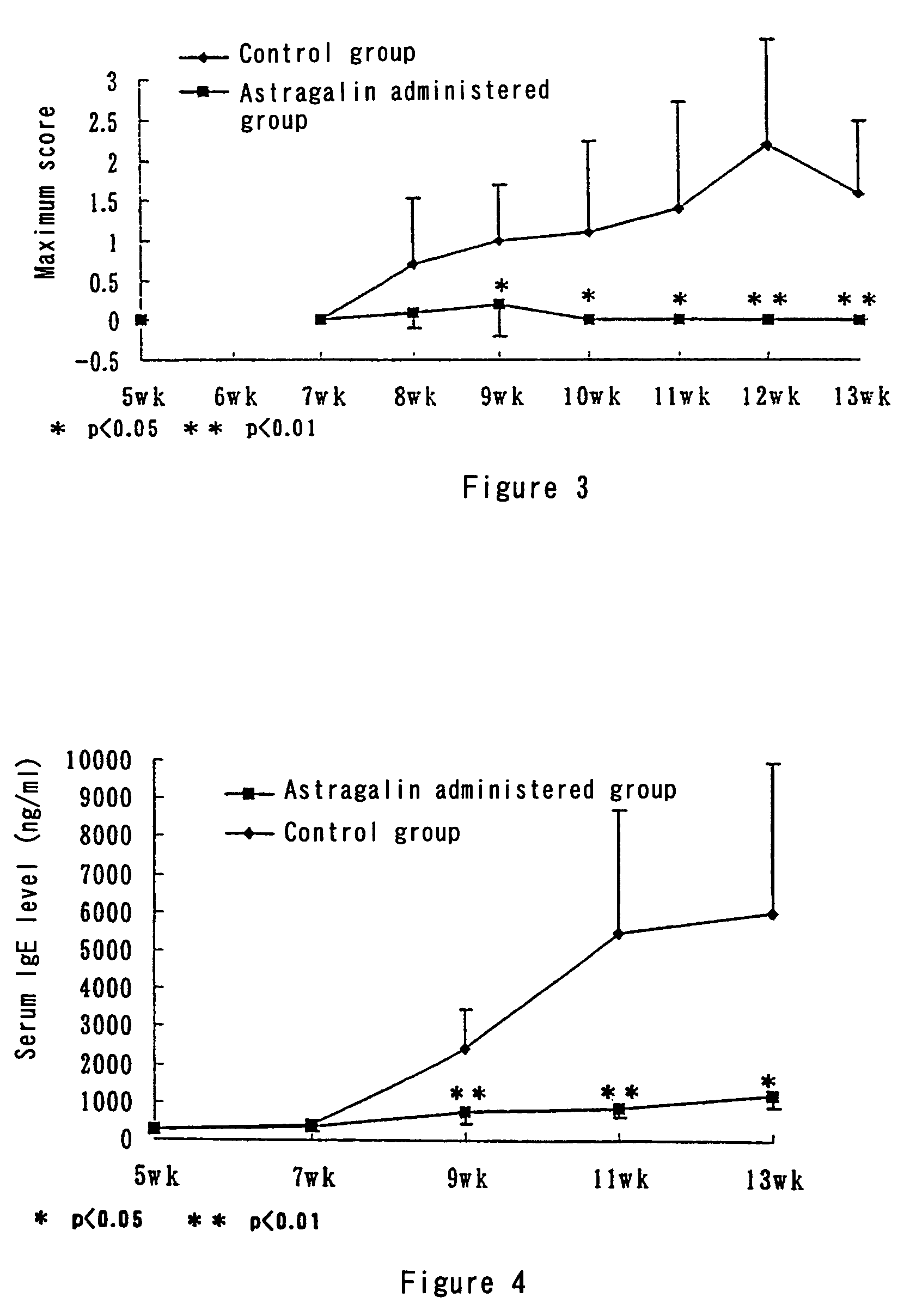Composition for preventing and treating type I allergy
a technology of kaempferol and kaempferol, which is applied in the direction of drug compositions, immunological disorders, instruments, etc., can solve the problem of insufficient effect, and achieve the effect of suppressing type i allergy and its symptoms, and excellent preventative or therapeutic effect on type i allergy
- Summary
- Abstract
- Description
- Claims
- Application Information
AI Technical Summary
Benefits of technology
Problems solved by technology
Method used
Image
Examples
experimental example 1
Suppression of Passive Cutaneous Anaphylaxis (PCA) in Mice
[0062]Ten 5-week-old ddY male mice were purchased from Japan SLC, and were reared at a room temperature of 23±3° C. and a humidity of 55±15%, with a 12 hour light-dark cycle (light period 7:00 to 19:00). The mice were kept 5 to a cage, and were fed a standard diet (Labo MR Stock, Nihon Nosan Kogyo K.K.) for a 7-day preliminary period, before being divided into a group to be administered astragalin and a control group each of 5 mice. A 0.025% (w / v) solution of astragalin in distilled water was forcedly orally administered (1.25 mg / 5 ml / kg) to the astragalin-administered group using a metal stomach tube, while distilled water was forcedly orally administered (5 ml / kg) to the control group. One hour after the administration, 20 μl of an anti-DNP mouse IgE antibody (10 μg / ml) was intracutaneously injected into the right auricula and 20 μl of physiological saline into the left auricula of each mouse. 24 hours after the intracutane...
experimental example 2
Histamine Release Suppression Test Using Human Whole Blood
[0068]Human whole blood was collected from healthy volunteers and heparin was added thereto. A blood sample was prepared by adding 6 parts by weight of a histamine release buffer (Immunotech) to 1 part by weight of the whole blood to which the heparin had been added. 200 μl of the blood sample and 100 μl of a histamine release buffer comprising astragalin (33 μM), kaempferol (33 μM) or epinephrine (1638 μM or 4917 μM) were placed in an Eppendorf tube and allowed to stand for 30 minutes while cooling in ice (final concentration: 11 μM for astragalin, 11 μM for kaempferol, 546 μM or 1639 μM for epinephrine).
[0069]Centrifugal separation (3000 rpm, 5 minutes, 4° C.) was then carried out and the supernatant removed, and the resulting cells were again put into 300 μl of a histamine release buffer. 4.5 μl of 1 mg / ml CRA-1 (an anti human FcεRI receptor antibody, Cosmo Bio) was next added to the mixture (final CRA-1 concentration 15 μ...
experimental example 3
Intake Test Using NC / Nga Mice
[0072]NC / Nga mice are conventional grade animals, and atopic dermatitis model mice that spontaneously develop atopic dermatitis. Moreover, the development of atopy is accompanied by a rise in serum IgE level.
[0073]Ten 4-week-old NC / Nga male mice were purchased from Japan SLC, and were reared at a room temperature of 23±3° C. and a humidity of 55±15%, with a 12 hour light-dark cycle (light period 7:00 to 19:00). The mice were kept 5 to a cage, and were fed a standard diet (Labo MR Stock, Nihon Nosan Kogyo K.K.) for a 7-day preliminary period, before being divided into a control group and a group to be administered astragalin, each of 5 mice. The mice were then allowed to eat the following diets ad libitum. Control group: A diet prepared by adding a corn starch (0.0007%, Oriental Enzyme K.K.) to MF powder (Oriental Enzyme K.K.) and then mixing in a mixer.
Astragalin-administered group: A diet prepared by adding astragalin (0.0007%) to the MF powder and then...
PUM
| Property | Measurement | Unit |
|---|---|---|
| weight | aaaaa | aaaaa |
| weight | aaaaa | aaaaa |
| humidity | aaaaa | aaaaa |
Abstract
Description
Claims
Application Information
 Login to View More
Login to View More - R&D
- Intellectual Property
- Life Sciences
- Materials
- Tech Scout
- Unparalleled Data Quality
- Higher Quality Content
- 60% Fewer Hallucinations
Browse by: Latest US Patents, China's latest patents, Technical Efficacy Thesaurus, Application Domain, Technology Topic, Popular Technical Reports.
© 2025 PatSnap. All rights reserved.Legal|Privacy policy|Modern Slavery Act Transparency Statement|Sitemap|About US| Contact US: help@patsnap.com



